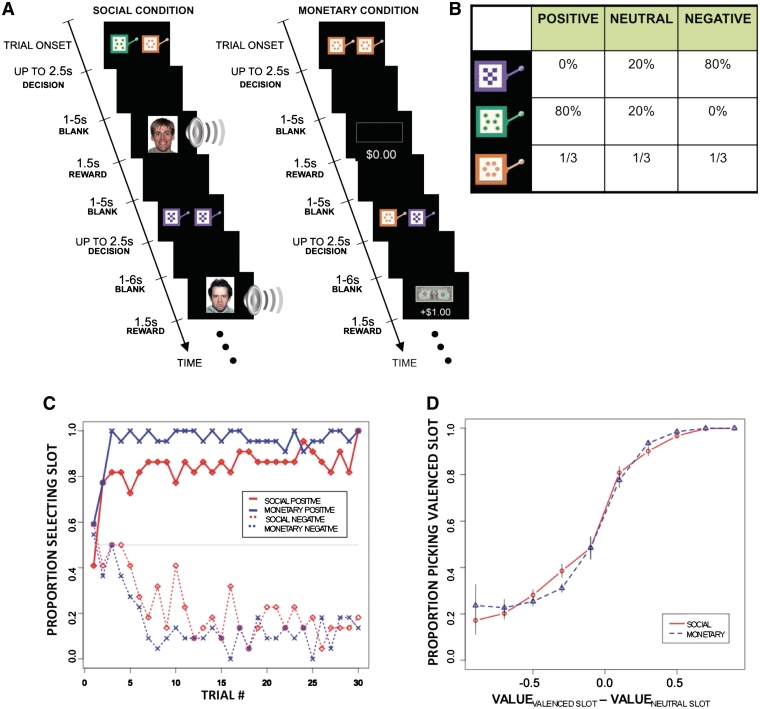Fig. 1.
Task and behavioral results. (A) Timeline of the monetary and social reward trials. Choice trials paired a neutral slot machine with a valenced slot machine. Trials were identical except for the nature of the outcomes: monetary trials had a gain/loss of +$1, 0$ or −$1, whereas social trials revealed happy, neutral or angry faces accompanied with sound effects of similar emotional valence. The experiment also included no-choice trials (in which a pair of identical slot machines were shown: neutral, negative or positive) to help separate the learning and stimulus value signals. Specific slot machines were randomly assigned to specific reward outcomes at the start of the experiment for each subject, and distinct between monetary and social condition blocks. (B) Distribution of outcomes for each slot machine. First row: negative machine. Second row: positive machine. Bottom row: neutral machine. The same distribution was used in the monetary and social conditions. Actual appearance of the slot machines was randomly paired with a reward outcome distribution and distinct between monetary and social condition blocks. (C) Plot of group subject choices across trials (only the first 30 are shown). (D) Psychometric choice curve for monetary and social conditions. Bars denote standard error measures computed across subjects.

